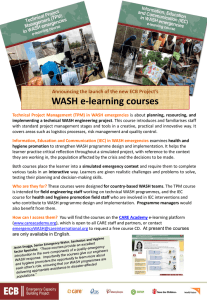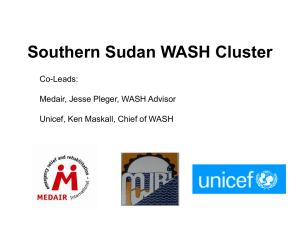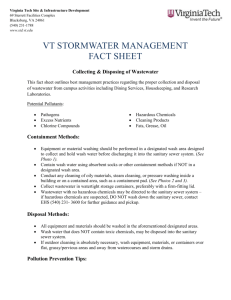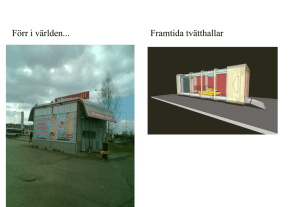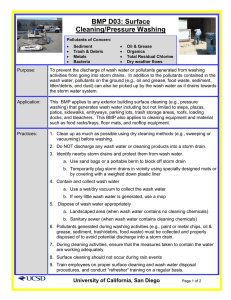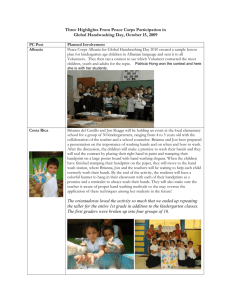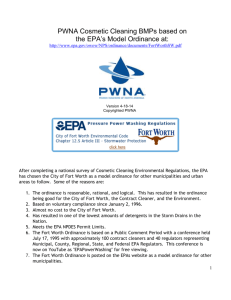Vehicle Wash Water - Environmental Health and Safety | Virginia Tech
advertisement
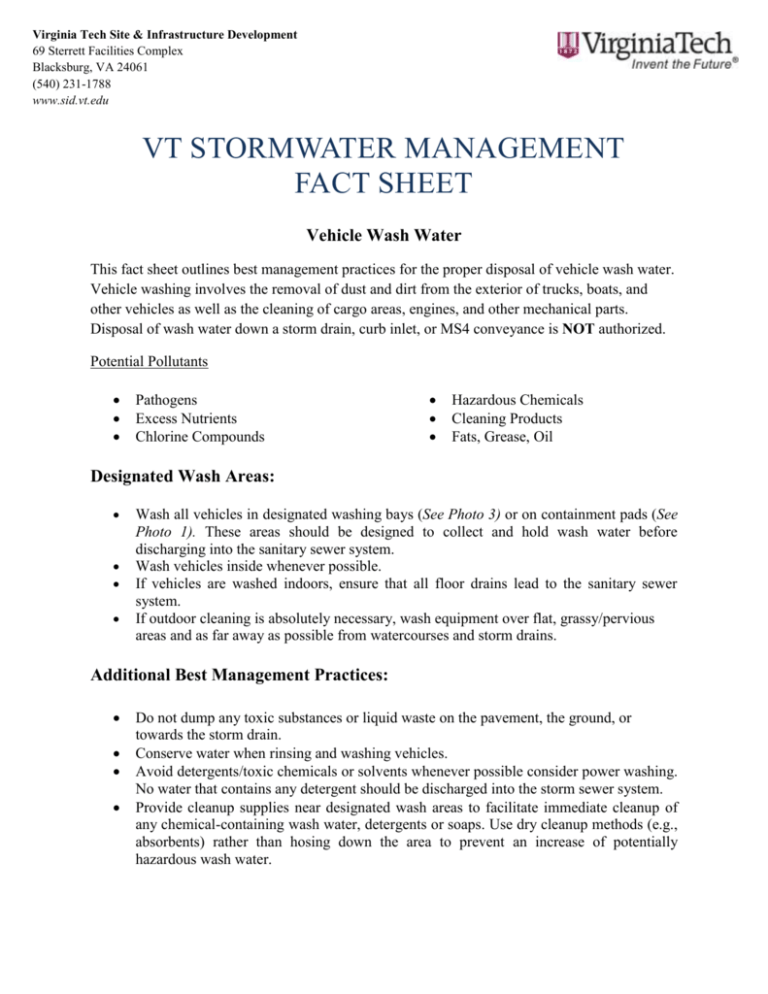
Virginia Tech Site & Infrastructure Development 69 Sterrett Facilities Complex Blacksburg, VA 24061 (540) 231-1788 www.sid.vt.edu VT STORMWATER MANAGEMENT FACT SHEET Vehicle Wash Water This fact sheet outlines best management practices for the proper disposal of vehicle wash water. Vehicle washing involves the removal of dust and dirt from the exterior of trucks, boats, and other vehicles as well as the cleaning of cargo areas, engines, and other mechanical parts. Disposal of wash water down a storm drain, curb inlet, or MS4 conveyance is NOT authorized. Potential Pollutants Pathogens Excess Nutrients Chlorine Compounds Hazardous Chemicals Cleaning Products Fats, Grease, Oil Designated Wash Areas: Wash all vehicles in designated washing bays (See Photo 3) or on containment pads (See Photo 1). These areas should be designed to collect and hold wash water before discharging into the sanitary sewer system. Wash vehicles inside whenever possible. If vehicles are washed indoors, ensure that all floor drains lead to the sanitary sewer system. If outdoor cleaning is absolutely necessary, wash equipment over flat, grassy/pervious areas and as far away as possible from watercourses and storm drains. Additional Best Management Practices: Do not dump any toxic substances or liquid waste on the pavement, the ground, or towards the storm drain. Conserve water when rinsing and washing vehicles. Avoid detergents/toxic chemicals or solvents whenever possible consider power washing. No water that contains any detergent should be discharged into the storm sewer system. Provide cleanup supplies near designated wash areas to facilitate immediate cleanup of any chemical-containing wash water, detergents or soaps. Use dry cleanup methods (e.g., absorbents) rather than hosing down the area to prevent an increase of potentially hazardous wash water. Virginia Tech Site & Infrastructure Development 69 Sterrett Facilities Complex Blacksburg, VA 24061 (540) 231-1788 www.sid.vt.edu Immediately contain chemical-containing spills using an absorbent sock or other containment methods (See Photos 2 & 4). NOTE: Washing of vehicles and equipment generates oil, grease, sediment, and metals in the wash water. Toxic waste includes used cleaners, rags (soaked with solvents, floor cleaners and detergents), and automotive products (such as antifreeze, brake fluid, radiator flush and used batteries). If these items enter the storm drain system at any time contact Environmental Health and Safety immediately at 540-231-3600 or visit: www.ehss.vt.edu/report_issue. Photo 1: Example of a containment pad. Photo 2: Example of a drip pan for use in laboratories and/or vehicle maintenance areas. Photo 3: Example of a wash bay. Photo 4: Absorbent Sock containing an oil spill.



